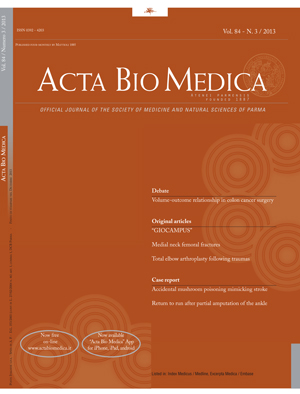Distal radius articular fractures: a comparison between ORIF with angular stability plate and percutaneous Kirschner wires.
Keywords:
wrist, plate, percutaneous, pinningAbstract
Purpose of the study: To analize and compare vantages and disadvantages in long-term of two different techniques to treat distal radius articular fractures: ORIF with plate versus percutaneous pinning with K-wires.Materials and Methods:We reviewed 77 distal radial articular fractures treated surgically from 2005 to 2009. Fractures were divided in two homogeneous groups according to patient age, gender, fracture-type and follow-up. The first group was treated with ORIF using angular stability volar plate, while the second one with closed reduction, K-wires percutaneous pinning and ante-brachial plaster casting. Functional outcomes were assessed with MAYO and DASH score, wrist range-of-movement and handgrip. Radiographic parameters were calculated in the post-operative and long-term x-rays.
Results: ORIF group showed better mean DASH and MAYO score, range of movement and handgrip strength compare to K-wires group. Expecially in type C fractures and in younger patients (<65 years). Minor differences were observed in type B fractures. About complications: two cases of surgically-treated medial nerve compression in ORIF group and one in K-wire group, one case of algodystrophy in K-wire group. Referring to radiographic parameters, long term values show data positive for ORIF.
Conclusions: Though several studies about these techniques has been performed, but no scientific evidence proves the superiority of one surgical treatment. C-type need to be treated with plate in young patients or in elderly patients with high functional demand. Elderly patients with low functional demand can achieve satisfactory results also with percutaneous pinning, especially in Btype fractures.
Downloads
Published
Issue
Section
License
This is an Open Access article distributed under the terms of the Creative Commons Attribution License (https://creativecommons.org/licenses/by-nc/4.0) which permits unrestricted use, distribution, and reproduction in any medium, provided the original work is properly cited.
Transfer of Copyright and Permission to Reproduce Parts of Published Papers.
Authors retain the copyright for their published work. No formal permission will be required to reproduce parts (tables or illustrations) of published papers, provided the source is quoted appropriately and reproduction has no commercial intent. Reproductions with commercial intent will require written permission and payment of royalties.



